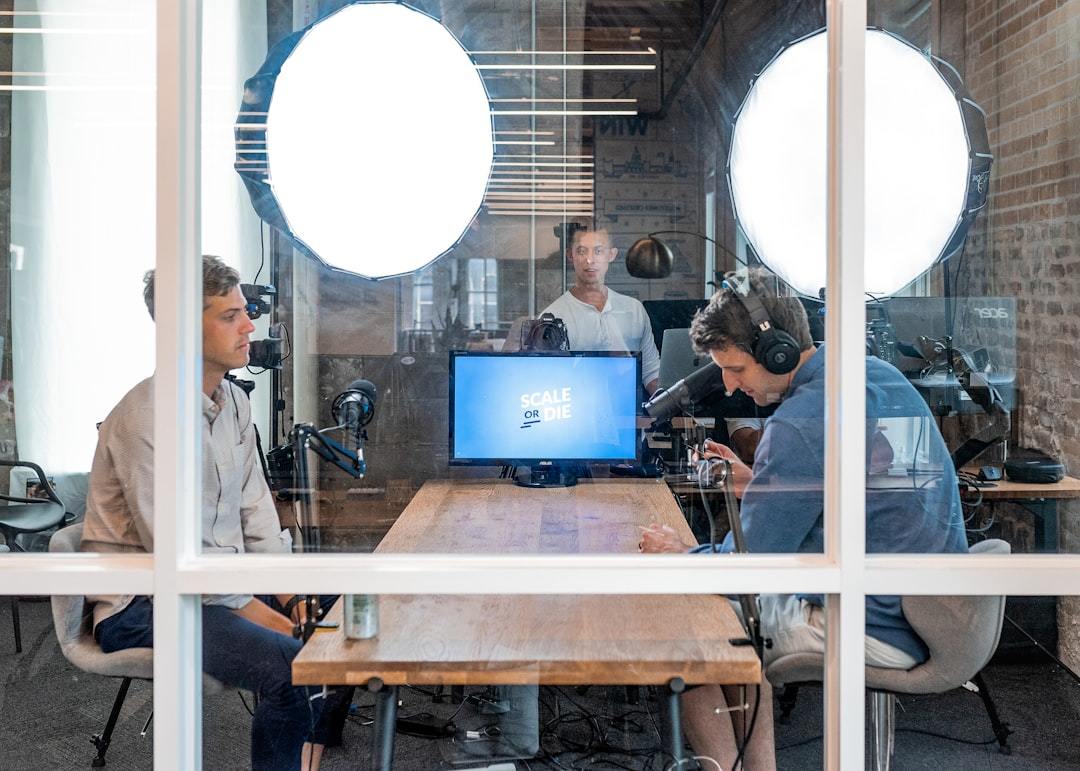Ever wondered **why is technology integration important for media rooms**? You’re in the right spot. It’s more than just sprucing up your area with the newest tech toys. It’s about transforming how students learn, engage, and prepare for their futures. By weaving digital tools into media rooms, we create environments that spark curiosity and foster a love for learning.
We’ll dive deep into making these spaces more interactive with virtual field trips, enhancing collaboration through tech platforms, and personalizing education to fit every student’s needs. Plus, we can’t overlook preparing our students for a digitally connected world—skills they pick up here are ones they’ll use throughout their careers.
So let’s get practical and explore together how integrated technology not only enriches learning experiences but also equips learners for tomorrow’s challenges.
Disclosure: This blog contains affiliate links, which means that I may earn a commission if you click on these links and make a purchase. Rest assured, this does not result in any additional cost to you. My primary goal is to provide valuable content and recommendations that align with the topics and themes of this blog. I only promote products or services that I genuinely believe in and think can benefit you, my readers. Your trust is important to me, and I am committed to maintaining transparency and integrity in all affiliate relationships. Thank you for your support, and I hope you find the information and recommendations on this blog helpful.
Importance of Technology Integration in Media Rooms
- Importance of Technology Integration in Media Rooms
- Gamified Learning for Enhanced Engagement
- Virtual Field Trips and Interactive Learning Opportunities
- Empowering Student-Centered Learning with Personalized Devices
- Fostering Student Collaboration through Technology
- Preparing Students for Future Careers
- FAQs in Relation to Why is Technology Integration Important for Media Rooms
- Conclusion
Importance of Technology Integration in Media Rooms
Imagine walking into a media room where technology integration isn’t just an add-on, it’s the heartbeat. This is not about having the fanciest gadgets but creating engaging learning spaces that resonate with every student who walks in. Digital tool integration transcends mere enhancement, morphing rooms into vibrant hubs primed for investigation and revelation.
Creating Engaging Learning Spaces
The secret sauce to making learning irresistible? Sprinkle some classroom technology across your lesson plans, and watch engagement levels soar. Integrating tech tools into the fabric of learning spaces, we’re not just enhancing the presentation of material but also equipping learners for a tomorrow where navigating technology is as fundamental as literacy in its traditional sense. The beauty here lies in its ability to tailor experiences to individual needs—making sure no learner feels left behind.
Incorporating technologies like interactive whiteboards or digital storytelling tools allows educators to present information in ways that are both accessible and captivating. Remember those days when watching paint dry seemed more appealing than sitting through another lecture? Well, they’re long gone now because integrating technology means lessons can be as lively and diverse as our favorite social media feeds—keeping everyone on their toes.
Adopting this method not only enhances students’ scholarly pursuits but also arms them with the essential capabilities needed to steer through future employment landscapes. With studies showing how familiarity with common programs boosts career readiness, there’s never been a better time to get digitally connected within our classrooms’ four walls.
Gamified Learning for Enhanced Engagement
Remember when you couldn’t wait to play video games after school? Now, imagine bringing that same excitement into the classroom. That’s exactly what gamified learning does. By using tech tools like digital badges or progress tracking, we’re not just making learning fun; we’re tapping into a digital native’s world.
This strategy caters to diverse educational preferences, broadening its appeal to a wider spectrum of learners. Think about it: some kids learn by doing, others by seeing or hearing. Gamification in lesson plans brings all these elements together. Fostering critical thinking through such captivating methods, learners often remain oblivious to the fact that they’re actively absorbing knowledge.
This study highlights how incorporating elements of gaming into education can remarkably elevate learners’ enthusiasm and involvement, offering a vivid illustration of gamification’s potential. And let’s face it, motivated students are engaged learners who are more likely to grasp complex concepts and retain information longer.
Differentiated instruction also plays a crucial role here. With tech tools at our disposal, teachers can customize educational content to fit every student’s needs – whether they’re visual learners who benefit from read-alouds or hands-on types who thrive with interactive simulations.
Virtual Field Trips and Interactive Learning Opportunities
Imagine the classroom walls disappearing, transporting students to the pyramids of Egypt or the depths of the Amazon rainforest. Virtual excursions revolutionize the way we teach, turning classrooms into gateways to ancient pyramids or dense rainforests without stepping outside.
Expanding Horizons with Virtual Field Trips
The power of VR tech lets kids explore far-off places without leaving their seats. It’s like having a magic school bus parked right in your media room. Global exploration through this medium not only injects thrill into education but also profoundly augments comprehension by furnishing students with tangible connections to the wider world.
This immersive approach allows students to access sites and experiences that would be otherwise impossible due to logistical constraints or budget limitations. They can dive into history, science, art, and more—all from the comfort of their classroom.
Fostering Real-Time Collaboration Through Video Conferencing
In our modern, digitally intertwined globe, video conferencing solutions play a crucial role in knitting together educational spaces, allowing students from disparate corners of the Earth to engage and collaborate instantaneously. This fosters cultural understanding and global awareness among students at an early age.
Such connections make lessons more engaging and meaningful as students interact with peers worldwide, sharing ideas and working on projects together. It transforms traditional teaching methods into dynamic discussions that encourage critical thinking skills—preparing them for success beyond high school.
Empowering Student-Centered Learning with Personalized Devices
Tailoring education to meet the unique needs of every student sounds like a dream, right? Nowadays, classrooms are transforming into spaces where personalized gadgets turn the once far-fetched dream of customized learning for each pupil into an attainable reality. Imagine a world where digital natives use their personal tech not just for social media scrolling but as powerful learning tools.
Tailoring Education with Personal Tech
The significance of these devices goes beyond having easy internet access or the ability to snap photos. They allow students to dive deeper into subjects they love and explore areas they’re curious about at their own pace. With digital tools in hand, learners can achieve a deeper understanding on topics by accessing wide varieties of resources that textbooks alone can’t provide.
But it’s not all smooth sailing; integrating technology takes time and effort from educators. Yet, when done right, it enhances the learning experience significantly by offering individualized instruction tailored specifically to each student’s needs and preferences.
Adopting this method does more than just spice up the learning environment; it equips learners with the tech skills vital for navigating future professional landscapes. Familiarity with common programs and tools through day-to-day technology use in class sets them up for success down the road. It’s clear: personalized devices are reshaping how we think about education—making it more inclusive, dynamic, and well-suited for the digital age.
Fostering Student Collaboration through Technology
Enhancing Teamwork with Digital Platforms
Nowadays, collaboration isn’t confined to just physical spaces; it flourishes in the digital realm as well. By integrating collaboration technology into media rooms, we give students the tools to create together, no matter where they are. Imagine students working on a group project using software that lets them simultaneously edit documents and communicate in real-time. This isn’t futuristic thinking—it’s happening now.
These tools illuminate for learners the essential nature of clear dialogue in achieving harmonious teamwork. They learn quickly that understanding content deeply requires clear expression and active listening—skills crucial not only in school but also in life.
Stats back up the effectiveness of this approach too. Classrooms embracing technology see an uptick in collaborative projects because these digital environments naturally encourage interaction and cooperation among peers.
Bridging Communication Gaps with Technology
Gone are the days when miscommunication could derail a student project. With tools designed specifically to improve peer interactions, everyone gets heard equally loud and clear. Video conferencing apps bring faces from across town or around the globe right into your classroom, making every discussion richer and more inclusive.
This advancement in technology not only assists individuals who find verbal expression challenging but also empowers reserved or introverted pupils to share their thoughts efficiently without having to leave the safety of their personal space.
Preparing Students for Future Careers
Imagine a world where every student steps into their career fully equipped with the skills they need. That’s what integrating technology in media rooms aims to achieve. In today’s learning environments, introducing learners to prevalent workplace technologies and applications doesn’t merely educate them; it equips them for future professional success.
Mastering these online tools and platforms is absolutely essential. Think about it: knowing how to navigate through digital platforms, understanding the ins and outs of various software, and having hands-on experience with tech tools are all on the wishlist of employers across industries. It’s like giving our students a Swiss Army knife when they head out into the real world – incredibly handy.
But why stop at mere familiarity? The goal is also to make sure that this exposure translates into genuine readiness for whatever career path our students choose. Through instructional technology specialist-guided lessons, collaborative projects using digital media, or even virtual field trips facilitated by cutting-edge tech tools, learners gain more than knowledge—they build confidence.
The beauty of this approach lies not just in mastering specific technologies but also in developing problem-solving abilities, critical thinking skills, and adaptability—qualities that are gold dust in any profession. Incorporating tech into education today not only enriches the learning journey but also primes tomorrow’s pioneers for triumphs that transcend academic confines.
FAQs in Relation to Why is Technology Integration Important for Media Rooms
Why is integration important in technology?
It streamlines processes, boosts efficiency, and enhances user experiences. Tech without integration is like a toolbox with no tools.
What is the importance of technology media?
Technology media keeps us informed on the latest tech trends and breakthroughs. It’s our digital era’s news source.
What are the benefits of technology integration?
Makes learning interactive, personalizes education, and preps students for tomorrow’s jobs. Essentially, it future-proofs education.
What are the benefits of integration of media in teaching and learning?
Bridges knowledge gaps through visual aids, sparks creativity among learners, and encourages critical thinking. Media turns classrooms into innovation hubs.
Conclusion
Why is technology integration important for media rooms? We’ve explored this in depth. Here’s what you should remember:
Technology revolutionizes educational environments, rendering them vibrant and captivating. Education becomes tailor-made, adapting perfectly to the distinct requirements of each learner.
Virtual field trips expand horizons without leaving the room. By leveraging collaborative tools, students learn the essence of teamwork through engaging with one another across various digital environments.
Preparing our learners for future careers starts here—in tech-integrated media rooms where they master essential digital skills early on.
So start today. Integrate technology into your lesson plans and watch as students engage more deeply, learn creatively, and prepare for a digitally connected world.

